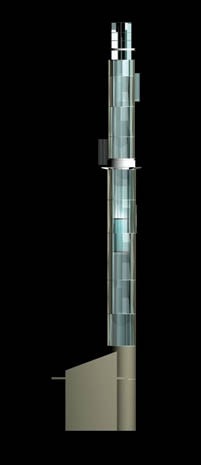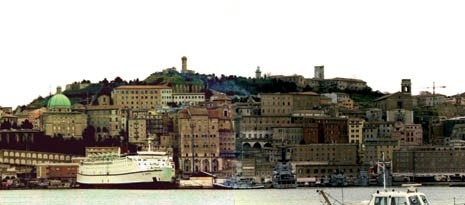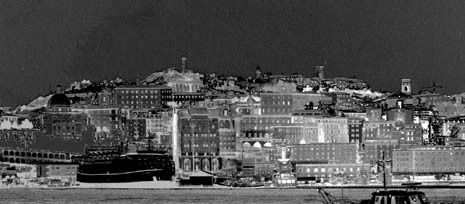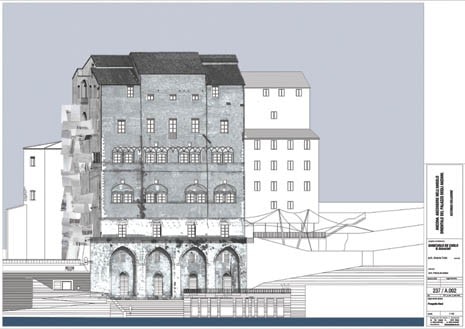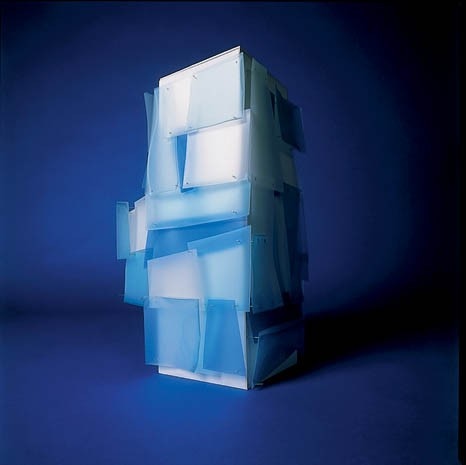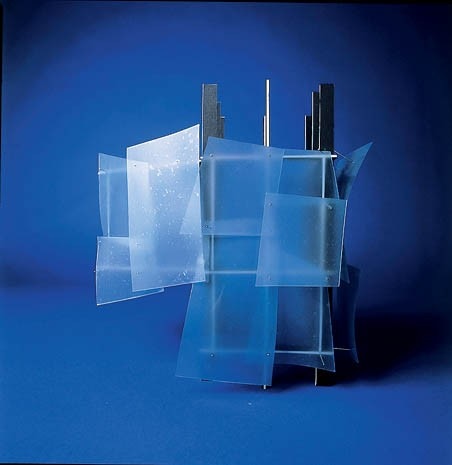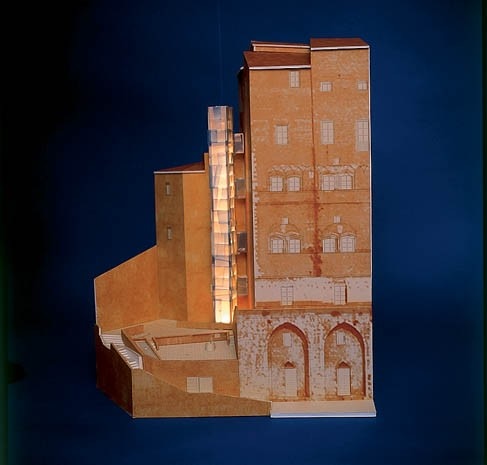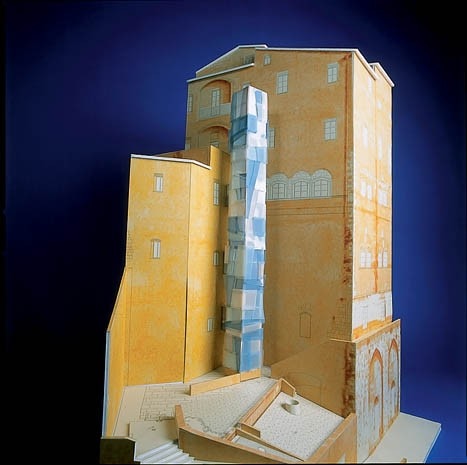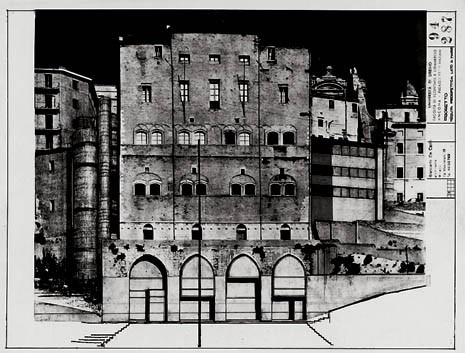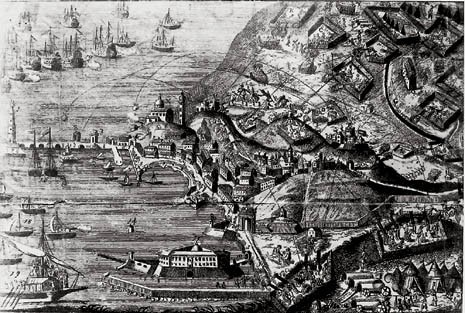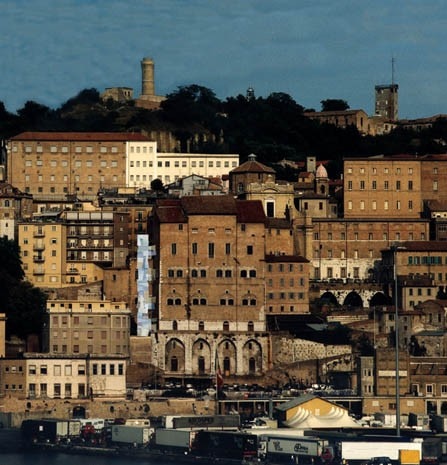My friend Peter Smithson argued that the great revolutions marking the history of Western architecture were the Gothic Age and the Modern Movement. The other upheavals were reflections of changes that had previously occurred in the arts, fashion and construction technologies. There is some truth in what Peter said and I must admit he was very good at making his case. But in the discussions we had at ILAUD regarding our view on the history of architecture, I could not help associating Romanesque (especially the Italian one) with Gothic. This was partly because Romanesque is more stimulating and agreeable to me and also because I think its renovating strength was just as vital as the gothic was. Furthermore, in that particular period, philosophers, scientists and artists were about to discover, with equal dismay all over the Western Europe, that the world was not flat and the planets did not rotate around the earth but rather around the sun. A radical transformation was taking place in the conception of sidereal space, and consequently, in the laws governing the universe. Architecture being concerned with the organisation and form of earthly space was directly committed to defining a new conception of its role, one strong enough to metabolise the disruption of any spatial foundations. Gothic and Romanesque styles were potent outcomes of this commitment. Gothic escaped the by then untenable classical models and compensated for them by launching dazzling metaphors of the most impenetrable transcendence towards the heavens. Similarly, Romanesque escaped the representations of an order that could no longer be supported by rooting itself to the ground with solids and voids, and reassuring, even though dramatic correspondence between light and shade. With these means they depicted simulacra of solid immanence to which a large part of human society addressed its hope. The Modern Movement was not the result of any revolution. It was instead an outflow of energy concurrent with the Saint-Simonian and the many utopian impulses of its time. The real revolution referred to as “industrial” was the economic and social one that, from the end of the 1700s to the end of the 1800s, overturned the foundations of Western society. The architecture of the Modern Movement was captivated by the boundless growth of cities caused by the great migrations, by the way in which new systems of movement as well as new systems of production and consumption cut into the territory, by the urgency and novelty of the demand for housing, workplaces, services, etc. But it did not express positions that went beyond the political propositions of the more innovative revolutionary currents. One could rightly say this because artists and architects could only express themselves with the instruments of their professions. In fact they contributed by inventing astonishing new spaces and a formal language that was immediate, essential and focused on an explicit compositional and expressive quality that had never been seen before. But it cannot be said that they revolutionised the world because the real changes were happening in the “structure”, which was substantially political and economic. Could a common programme, if not an alliance, have been established in that period? Perhaps something could have taken root, something between political currents and artistic movements that were aware of social injustice and hardship. But which political and artistic movements, given the former were tending to bureaucratic regression and the latter on the way to being engulfed by the market? The majority of artists progressively withdrew into their egos and as for the political movements, between the Saint-Simonian reformers and the generous and impulsive utopians the former prevailed. Reformers achieved admirable results thanks to their innovative energies but were soon degenerating into conformism and bureaucratic perversion, inundated by today’s cult of consumption and profit in which we are drowning. Overwhelmed by a general decadence, modern architecture was unable to escape trial for its presumed “leftist” origins. This was because a good number of its initiates were partial to the Russian constructivists, the American libertarian writers and poets, the English Fabians and the German rationalists. But it was also due to its having revealed the tricks with which first the Academy and later the Market falsified the true values of artistic processes, making them fall into expedients that produced, and only in the best of cases, decoration. Today contemporary architecture is threatened by a small but aggressive herd of critics and a flock of cowardly bureaucrats. The more contemporary architecture is attractive the more they want it to disappear. One of their arguments is that contemporary architecture cannot intrude into historic centres because it is graceless and uncultured. It will only be acceptable in suburban or shabby districts of towns, unless it adapts to being the jester of power, celebrating itself with ludicrous buildings called modern because they neutrally use a contemporary technology. This can be seen in recent competitions for renovating some Italian city centres. One could sense that the pit bull critics and the cowardly bureaucratic sheep, as well as a large sector of public administrators and politicians, are happy with the results. I believe that instead a serious defence should be organised, since there is a great danger not only for architecture but also for the human race. We quite simply risk being left without significant references in our spatial environment. The first line of defence is to promote a discussion on the subject: does contemporary architecture have the same right to visibility as the architecture of earlier periods? The question is addressed to everybody and to the readers of Domus, to whom to begin with, I offer a project for an elevator in Ancona, published in the following pages.
A screen matter
1. The Marche region
This is one of Italy’s most interesting regions in terms of its geography, landscapes, the quality of the towns and villages, and its precious art and architecture. Half the territory overlooks the Adriatic Sea while the other half lies amidst the Apennine mountain range. Situated in the centre of mainland Italy, the region has been involved in the political and cultural changes that have affected Italy. Ancona boasts the largest population and is the regional capital. It plays an important role in facilitating trade between the agricultural hinterland and the major cities of mainland Italy, Europe and – via its port – the entire Mediterranean basin.
2. The port of Ancona
The port of Ancona lies on the curve in the shoreline that circumscribes the eastern side of Colle del Guasco. On this summit stands the splendid Romanesque cathedral of San Ciriaco, the most important urban landmark for local inhabitants and travellers alike. The curve of the port is marked by three focal points connected to that of the cathedral. They mark the beginning, middle and end of the docks and the main berths. The first is called Lazzaretto and was constructed by Luigi Vanvitelli in the 18th century; the second is known as the Arco di Traiano; the third is Palazzo degli Anziani, the location of one of the busiest descents to the quays. The palazzo is divided into two parts: a medieval one that rises from Piazza Alighieri to Piazza della Farina, and a baroque one with another two floors. The early medieval years took a toll on the building and we have no precise details of the projects or those responsible for them. We know from Vasari about a remodelling in the early 14th century that was conducted by Margheritone d’Arezzo. The various architectural elements are of a high quality but what really counts, for its architectural eloquence, is the facade overlooking the sea: the enduring construction faces the sea and is a lasting memory for the sailors arriving and departing from the port.
3. Palazzo degli Anziani and the 1961 project
Palazzo degli Anziani consists of two parts placed one over the other: a lower construction in Piazza Dante Alighieri and an upper one reached from Piazza Stracca. The former is dominated by medieval characteristics while the latter is late-Renaissance and Baroque in style. Each has its own stairs, although these are not aligned and are therefore not linked with one other. As a result, those wishing to descend from the upper floors to the lower ones, or vice versa, must walk along winding passages that cross the precarious link between the Gothic block and the Baroque structure. There is no way to eliminate the architectural barriers except by creating rifts that would break through several vaulted ceilings and radically alter the spaces. The University of Ancona had come up against this problem in the 1960s, when it started to install itself in Palazzo degli Anziani. Several attempts were made to find a solution within the building, but the conclusion reached was that this could only be achieved at the cost of serious architectural damage. It was decided to design an external staircase-lift that could link all the various levels of the building without causing damage. I was asked to translate the plan into architecture and designed a system of three tangent cylinders – one containing the staircase, the second the lift and the third the landings; these were to be in reinforced concrete clad with sheet aluminium. The basic reason for this choice was to “detach it” from Palazzo degli Anziani, stress its perpetuity and move it closer to the port structures, declaring the impermanence of the new construction. The project was approved by the university and was popular with the superintendent of the time, but failed to win over the ministry and consequently came to nothing.
4. Thirty years on
Thirty years later, the municipal authorities decided to install their official seat in the palazzo as the university was moving elsewhere. They immediately came up against the same problem: how to link the various levels of the dual palazzo with a continuous system of movement that would also benefit the disabled. Once again, the city’s technical office engaged in a search for a solution inside the building. After realising that all the solutions were unviable because they involved severe damage to the vaulted ceilings, the office again considered the possibility of constructing an external system of vertical movement on the north side of the palazzo. So, almost as if by miracle, the city of Ancona came back to me thirty years later and asked me to produce a project for the insertion of just one lift that would have the smallest possible impact. The immediate aim of the project was to design a tower containing a lift that would serve all the palazzo floors so that everyone, including the disabled, would have access to the interior spaces. This plan had to contend with the problem of contemporary architecture being placed alongside the existing architecture. The issue is far broader and multi-faceted than the case appears at first glance. The problem of the dialogue between the old and the contemporary exists whatever the size ratio, whether the old and the new are separate or joined, and whether or not the second has to be enveloped, penetrated or interjected. Nonetheless, the case of Palazzo degli Anziani in Ancona is so “extreme” that it can be presented as a paradigm. The two sections of the building are in complete contrast. How could we start from this unavoidable difference and create a situation in which Palazzo degli Anziani could respond to the needs of the present – and hence survive –becoming more expressive and delivered from the boredom and oblivion into which it had fallen? And how could this be achieved with a third, contemporary construction that was in harmony with the other pieces and could, through this very harmony, bring it back to life?
5. The compositional principles of the palazzo applied to the tower-lift
The project started by trying to discover the essential composition of the old building that the tower-lift was to flank, and the findings were remarkable and decisive. On exploring the fronts, we discovered that their compositional system was based on a rhythmic sequence of golden ratios. This was only to be expected, you might say, as they are historical facades designed with considerable architectural expertise. However, the consistency and flexibility with which the method was applied is surprising, the parts having been bound together down to the tiniest detail in a system of rhythmic symmetry. We drew a grid over the symmetrical system identified in the facades of the palazzo and this formed the basis for the physical definition of the new addition, on which its diameters, heights and rhythms of the moulding were easily determined.
6. The first version of the project
The first version of the project envisaged a slender tower with a circular section containing a lift and inserted in the curve on the east front of the palazzo. Communication between palazzo and lift would be via walkways that entered the building on every floor through existing windows on the facade. All floors of the building were served, from the top one beneath the roof to the bottom one in the Gothic building; the lift would also descend to a basement housing the furnace and to a direct entrance onto the restructured Piazza Dante Alighieri. The tower-lift was made of steel and its external shell was closed with a system of glazing in various sizes and inclinations that would reflect the surrounding panorama like a kaleidoscope. The steel and crystal cladding had been composed in a repetition of the rhythms of the palazzo’s moulding, which marks the divisions of solids and voids and the decorative and constructional solutions of the facades in a series of golden ratios.
7. Proposals for improvements to the surrounding historical fabric
The urban fabric above the port curve that descended towards the docks with sequences of small-tiered buildings had been devastated first by bombing during World War II and then by a massive paternalistic reconstruction effort that produced the usual pretentious and cumbersome buildings, which reputable administrations normally donated to depressed areas following disasters. Palazzo degli Anziani provided an opportunity to draw up a number of proposals that would reduce the damage already inflicted on the city. The street system was reviewed so as to permit an improved link between the city centre and Colle del Guasco. A fitting design was proposed for Piazza Dante and repairs to the built fabric were scheduled to restore it to the original model; some of the ramps descending to the port were reconstructed and plans were made to salvage two archaeological sites that had been abandoned to their fate as rubbish dumps once excavations were over.
8. The trials encountered by the project
The first version of the project had been welcomed by the municipal authorities but opposed by the head of the cultural office who requested that the tower be replaced with a lift situated inside the palazzo. The virtue of not being visible to the outside world would compensate for the destruction of numerous vaulted ceilings inside that could compromise the architectural and structural integrity of the palazzo. This avoided contemporary architectural motifs being placed beside old ones and so the overall aim would be achieved. By this stage, the now ideological matter warranted the opinion of a higher body. After a long wait, a committee from the Ministry of Cultural Heritage declared that it had nothing against the insertion of contemporary architecture into historical contexts, but instructed that the lift was to be divided into two sections, one external and the other internal, and placed in some recess that must surely be present in the baroque fabric. Indeed, a recess was soon discovered by the city’s technicians. How could we agree to decapitate the tower by more than a third of its height without batting an architectural eyelid to please a group of officials who were anxious to rid themselves of a thorny issue and return it to the Superintendent of Ancona? We were no longer dealing with the same person but now one who was more inclined towards procrastination and who took the problem with the conviction that time would help resolve the issue. And time was found by complicating the project, i.e. applying the old trick at which modern day Italian bureaucracy seems to excel. It was confirmed that the first section of the lift was to be inserted into the interstice in the baroque fabric and a proposal was made to contain the second section inside a system of underground passages to be excavated beneath Piazza Stracca, with the object of ventilating the humid rear side of the palazzo. The mayor declared that the municipal authorities would never agree to the construction of a totally unnecessary system of underground passages – all the more so because, as everyone was well aware, the excavations would come across a store of archaeological finds that would require immediate suspension of the works for an indefinite period. Those who had helped draw up the project had, like the mayor, smelt a rat and decided to abandon the adventure only to produce a final demonstrative version at their own expense.
9. The foundations of the new screen-project
The changes to the last version can be summed up in their most significant assumptions. The first is that if the tower were shortened by one third of its height, it would no longer have the original configuration. This would call for changes to the shape of its various parts. Otherwise, these would find themselves inside a casing to which they no longer corresponded. In other words, the size and internal ratios of a piece of architecture cannot be changed at random if it is to suit the needs that generated it and, at the same time, help bring a meaning to its surrounding context. If changes become necessary for any reason, then the whole thing must be changed. The second refers to the structure of the form, which in the original project developed in a sequence of concentric, round impressions: the distribution of the pillars, the orientation of the main structure, the secondary structure supporting the glazing and the lift compartment. This geometric consistency would no longer be required if the size and, hence, the visual ratios between the tower-lift and the palazzo changed. The third assumption is that careful observation – also from largo del Porto – of the front of the palazzo (imagining that it would all be concentrated in the quality of the reflections produced by the casing) revealed that the size of the glazed panels would have to be larger than intended so that the variegated image would be perceived and deciphered, clearly and with astonishment, by vessels in the port. Moreover, larger glazed panels would produce a play of reflections that would “dematerialise” the insertion, clearly revealing that it was not the palazzo. The insertion would discreetly conceal the palazzo as occurs with screens that cover but do not intersect. The screen could also be changed, obscured or placed elsewhere to “screen” other situations deemed incompatible with their context. However, to achieve this mobility of use, the screen would need to be independent and live on in time and space – having an identity of its own that allows it to remain intact despite any changes.
10. Postscript
The drawings illustrate the functional and constructional aspects of the last version. We can add that the glazed screen is all-reflecting and, as a result, covers what is behind it. It is no longer necessary for the load-bearing structure to have a circular plan or for the lift compartment to be circular. The glazing is fixed to the lift structure by systems commonly in use that are reinforced to withstand wind stress. The lift compartment descends to the basement area and the entrance on Piazza Dante; it ascends to the floor of the council chamber, after which those wishing to climb higher in the baroque building will take the small lift that, we hope, will be inserted in the interstice between two large walls – with no need to break through the vaulted ceilings.
Architect: Giancarlo De Carlo
Associate: Antonio Troisi
Collaborators: Greta Pasquini, Patricia de Isidoro Martin
Engineering: Ernesto Olmeda
Mock-up photographs: Andrea Martiradonna
